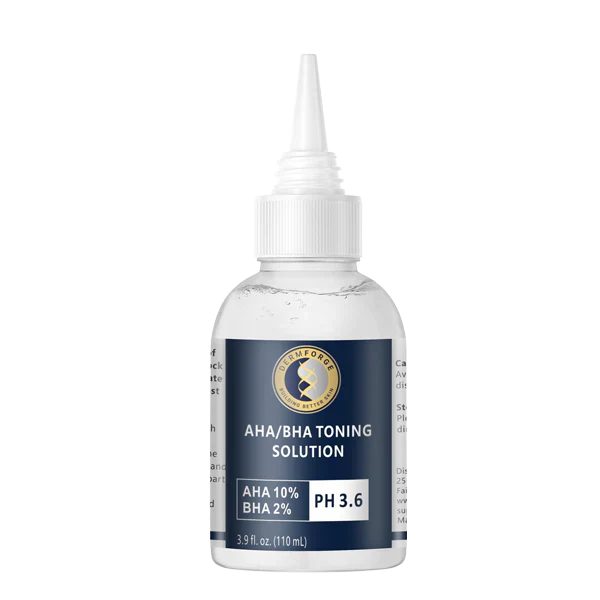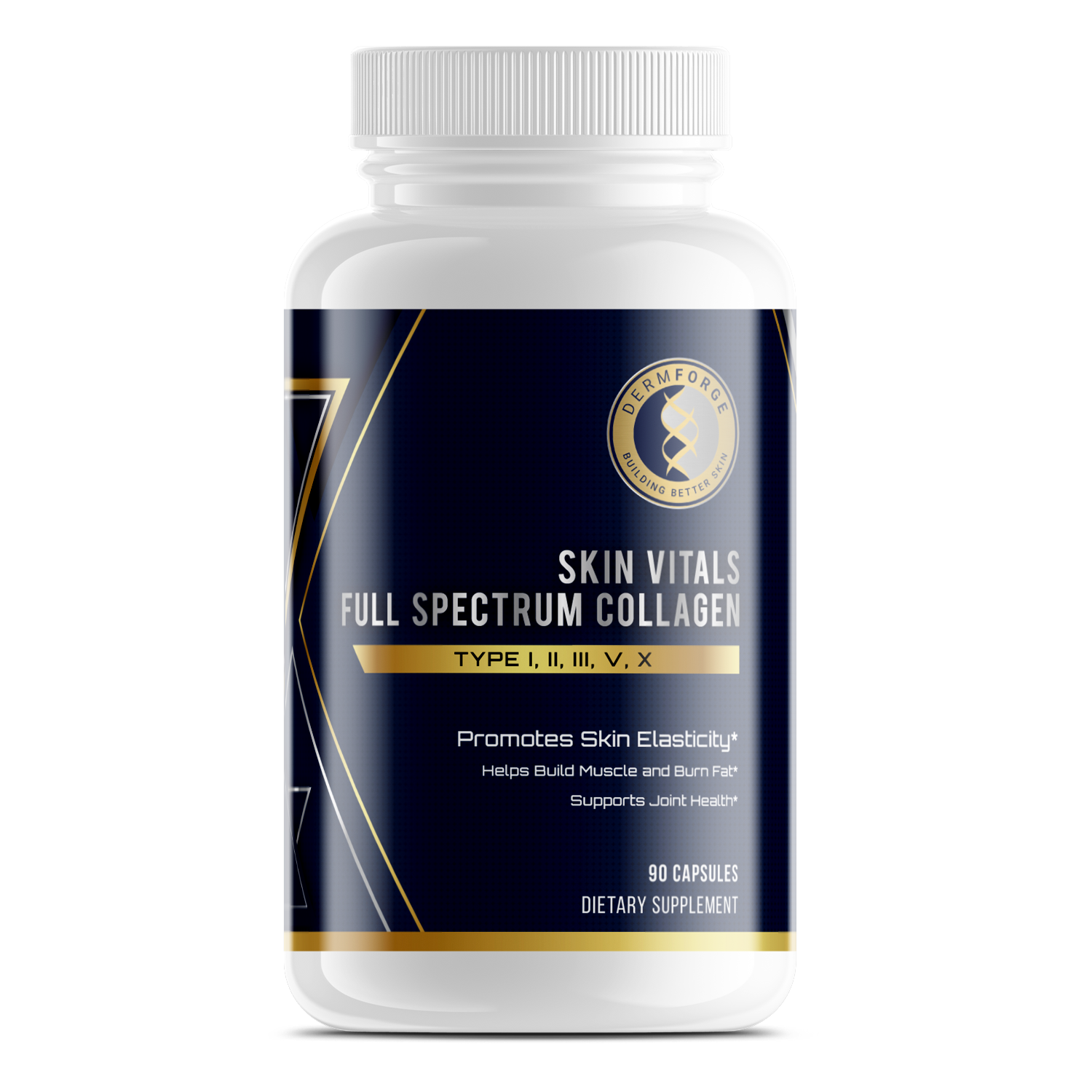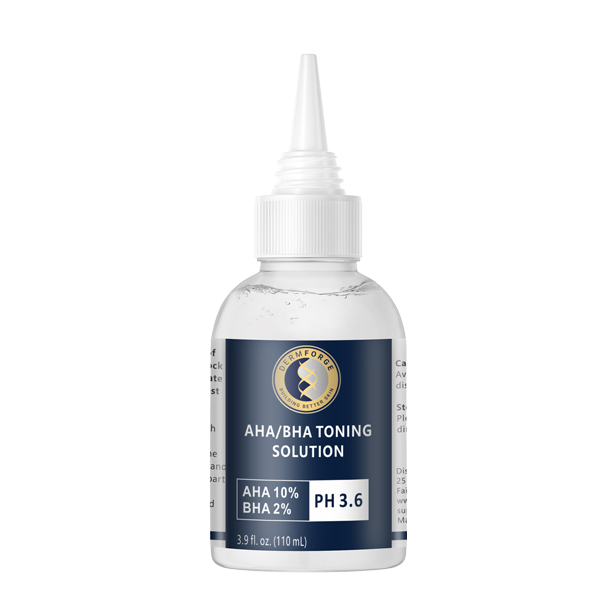Glycolic acid toners have become a cornerstone in skincare routines, offering effective exfoliation for a radiant complexion. As an alpha hydroxy acid (AHA), glycolic acid gently dissolves dead skin cells, promoting smoother and brighter skin. Regular use can enhance skin texture, reduce fine lines, and diminish hyperpigmentation. However, it's crucial to choose a toner suitable for your skin type and introduce it gradually to minimize potential irritation. Always apply sunscreen during the day, as glycolic acid can increase sun sensitivity. By thoughtfully incorporating glycolic acid toners into your skincare regimen, you can achieve a healthier, more youthful appearance.
What Is Glycolic Acid and How Does It Work?
Glycolic acid is a prominent alpha hydroxy acid (AHA) widely used in skincare for its exfoliating properties. Derived from sugar cane, it possesses the smallest molecular size among AHAs, allowing it to penetrate the skin effectively. This characteristic makes glycolic acid particularly efficient in promoting skin renewal and addressing various skin concerns.
Upon application, glycolic acid works by weakening the bonds between dead skin cells on the skin's surface. This action facilitates the shedding of these cells, revealing fresher, healthier skin beneath. By enhancing this natural exfoliation process, glycolic acid contributes to a smoother complexion and improved skin texture.
Additionally, glycolic acid stimulates collagen production, a protein essential for skin elasticity and firmness. Incorporating glycolic acid toners for exfoliation into your skincare routine can help reduce the appearance of fine lines and wrinkles over time. Regular use also aids in evening out skin tone by diminishing hyperpigmentation and dark spots.
It's important to note that while glycolic acid offers numerous benefits, its potency requires careful usage. Starting with lower concentrations and gradually increasing usage frequency can help minimize potential irritation. Furthermore, applying sunscreen daily is essential, as glycolic acid can increase the skin's sensitivity to ultraviolet rays.
In summary, glycolic acid serves as a powerful exfoliant that not only removes dead skin cells but also promotes collagen synthesis and skin rejuvenation. When used appropriately, it can significantly enhance the overall appearance and health of your skin.
Benefits of Glycolic Acid Toners
Glycolic acid toners offer multiple benefits for enhancing your skin's appearance. Primarily, they exfoliate the skin, leading to a smoother and brighter complexion. By gently removing dead skin cells, these toners reveal the fresher skin beneath. This process not only refines skin texture but also imparts a natural glow.
Additionally, glycolic acid toners effectively address common skin concerns such as fine lines, hyperpigmentation, and acne scars. They promote collagen production, which helps reduce the appearance of fine lines and wrinkles. Moreover, by accelerating cell turnover, these toners fade dark spots and acne scars, resulting in a more even skin tone.
Furthermore, glycolic acid toners enhance overall skin texture and hydration. Regular use can lead to a more refined skin surface, minimizing the appearance of pores. Some formulations also contain hydrating ingredients, which help maintain moisture balance, leaving your skin feeling soft and supple.
Incorporating glycolic acid toners for exfoliation into your skincare routine can yield noticeable improvements. However, it's essential to introduce them gradually and follow up with sunscreen, as glycolic acid can increase sun sensitivity.
How to Choose the Right Glycolic Acid Toner
Selecting the appropriate glycolic acid toner is essential for achieving effective exfoliation while maintaining skin health. Understanding your skin type and the product's formulation can guide you in making an informed choice.
For sensitive skin, starting with a glycolic acid concentration of 2-5% is advisable to minimize potential irritation. Individuals with normal or oily skin may tolerate higher concentrations, typically up to 10%, which can provide more pronounced exfoliation benefits. Introducing the toner gradually into your routine allows your skin to adjust, reducing the likelihood of adverse reactions.
Incorporating hydrating and soothing ingredients in glycolic acid toners can enhance their compatibility with your skin. Ingredients like hyaluronic acid and aloe vera help maintain moisture balance and soothe the skin, counteracting potential dryness from exfoliation. Products that combine glycolic acid with these components can offer effective exfoliation while preserving skin hydration.
The presence or absence of fragrance in a toner can also influence its suitability for your skin. Fragrance-free options are generally recommended, especially for sensitive skin, as they reduce the risk of irritation. However, if you prefer scented products, ensure that the added fragrances are non-irritating and compatible with your skin type.
When selecting glycolic acid toners for exfoliation, consider your skin's specific needs and sensitivities. Opting for a toner with an appropriate acid concentration, supplemented with hydrating ingredients, and free from potential irritants can promote a healthier, more radiant complexion.
How to Use Glycolic Acid Toners Safely
Incorporating glycolic acid toners into your skincare routine can enhance exfoliation and promote a radiant complexion. However, using them safely requires attention to timing, frequency, and product
Optimal Application Timing
Applying glycolic acid toners in the evening is generally recommended. This timing allows the product to work overnight, reducing potential sun sensitivity during the day. If you choose to use it in the morning, ensure you apply a broad-spectrum sunscreen afterward to protect your skin from UV damage.
Usage Frequency Based on Skin Type
The frequency of glycolic acid toner application should align with your skin's tolerance and type. For sensitive skin, start by using the toner once a week, gradually increasing to 2-3 times per week as your skin adapts. Individuals with normal or oily skin may use the toner more frequently, up to daily use, provided no irritation occurs. Always monitor your skin's response and adjust usage accordingly.
Combining Glycolic Acid with Other Ingredients
When integrating glycolic acid toners for exfoliation into your regimen, be cautious about combining them with other active ingredients. Using glycolic acid alongside retinol can increase the risk of irritation; it's advisable to use them on alternate nights. Combining glycolic acid with vitamin C may also cause sensitivity; consider using vitamin C in the morning and glycolic acid at night. However, pairing glycolic acid with niacinamide is generally safe and can enhance skin benefits without adverse effects.
By thoughtfully considering application timing, usage frequency, and ingredient combinations, you can safely incorporate glycolic acid toners into your skincare routine, maximizing their exfoliating benefits while maintaining skin health.
Common Mistakes to Avoid When Using Glycolic Acid Toners
Incorporating glycolic acid toners into your skincare routine can yield significant benefits. However, it's essential to avoid common mistakes to maintain skin health.
Over-Exfoliation and Skin Barrier Health
Overusing glycolic acid toners can lead to over-exfoliation, compromising your skin's protective barrier. This may result in dryness, irritation, and increased sensitivity. To prevent this, start by applying the toner once or twice a week, gradually increasing frequency as your skin builds tolerance. This approach helps maintain a healthy skin barrier while enjoying the exfoliation benefits.
Neglecting Sunscreen and Sun Sensitivity
Glycolic acid increases your skin's sensitivity to the sun, making it more prone to damage. Failing to apply sunscreen can lead to sunburn and other issues. Always use a broad-spectrum sunscreen with at least SPF 30 during the day when using glycolic acid products. This practice protects your skin and enhances the effectiveness of glycolic acid toners for exfoliation.
Combining Incompatible Ingredients
Mixing glycolic acid with certain active ingredients can cause irritation. For instance, using glycolic acid alongside retinol or vitamin C may lead to increased sensitivity. It's advisable to use these ingredients at different times; for example, apply glycolic acid at night and vitamin C in the morning. Additionally, avoid combining glycolic acid with physical exfoliants to prevent over-exfoliation.
By being mindful of these common mistakes, you can safely incorporate glycolic acid toners into your skincare routine, achieving a radiant complexion without compromising skin health.
Who Should Use Glycolic Acid Toners and Who Should Avoid Them?
Glycolic Acid Toners for exfoliation can be beneficial for various skin types, but it's essential to understand who should use them and who might need to exercise caution. Individuals with oily or acne-prone skin often find glycolic acid toners helpful. These toners effectively exfoliate dead skin cells, unclog pores, and reduce the occurrence of breakouts. Additionally, those with normal skin types seeking to improve skin texture and brightness may incorporate glycolic acid toners into their routines. However, starting with lower concentrations is advisable to assess skin tolerance.
Conversely, individuals with sensitive skin conditions, such as rosacea or eczema, should approach glycolic acid toners cautiously. The exfoliating nature of glycolic acid can lead to irritation, redness, or heightened sensitivity in these skin types. It's crucial to perform a patch test before full application and consult with a dermatologist to determine suitability.
For those unable to tolerate glycolic acid, alternatives like lactic acid offer gentler exfoliation. Lactic acid, another alpha hydroxy acid, provides milder exfoliation suitable for sensitive skin. Additionally, ingredients like polyhydroxy acids (PHAs) offer gentle exfoliation with minimal irritation. Incorporating enzyme-based exfoliants can also provide mild exfoliation without compromising skin comfort.
In summary, while glycolic acid toners can enhance skin radiance and texture, they are best suited for individuals with normal to oily skin types. Those with sensitive skin or specific conditions should consider milder alternatives to maintain skin health and comfort.
Conclusion
Incorporating glycolic acid toners into your skincare routine can significantly enhance your skin's health and appearance. These toners effectively exfoliate, removing dead skin cells and promoting a brighter complexion. Regular use can lead to smoother texture, reduced fine lines, and diminished hyperpigmentation. However, it's essential to choose a toner that suits your skin type and to introduce it gradually to avoid irritation. Always follow up with sunscreen, as glycolic acid can increase sun sensitivity. By thoughtfully integrating glycolic acid toners for exfoliation, you can achieve a more radiant and youthful complexion.






